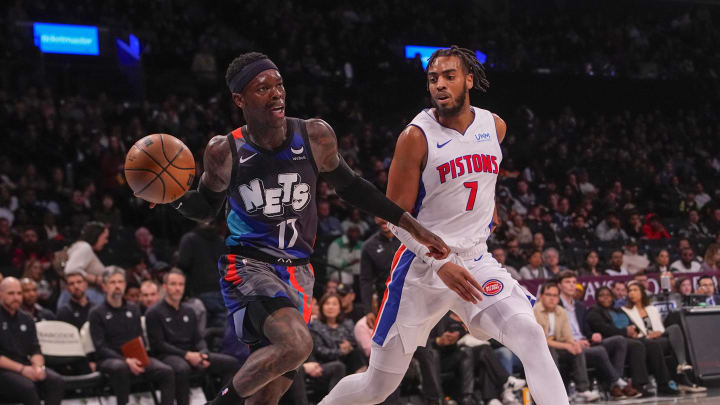What Is the Nets' Salary Cap Situation After Trading Mikal Bridges?

The Brooklyn Nets, now in a rebuild, are looking to shed their veteran contracts, which account for the majority of their salary cap. This is the first offseason where the new collective bargaining agreement has come into play, which introduces the highly talked about first and second aprons.
:
— Adrian Wojnarowski (@wojespn) June 30, 2024
New NBA salary cap is $140,588,00
Luxury Tax: $170,814,000
First Apron: $178,132,000
Second Apron: $188,931,000
The rules in the new CBA make the salary cap situation a bit tricky for teams looking to pay a lot to add talent. For example, the New York Knicks, who just traded for Brooklyn's Mikal Bridges, are adding another player to their outgoing salary to keep from being hard-capped in the first apron.
What are the consequences for entering each apron? Why does this matter? How does this affect Brooklyn?
Previously, taxpaying responsibilities would come from teams over the luxury tax threshold. Now, fines are given to non-taxpaying at the end of each year, but the further teams go over the luxury tax, the closer they are to the first and second aprons, where penalties quite literally affect how teams build their roster.
First apron penalties include: being unable to acquire a player via sign-and-trade if they then go above the first apron, salaries in trades must match within 110% (a drop from the 125% for teams not above the first apron), and being unable to sign a waived player from the regular if their salary was over the $12.2 million midlevel exception.
Second apron penalties include: being unable to include cash in trades, first-round picks seven years away are untradable, no trade exceptions can be used from multiple players' salaries, no previous trade exceptions can be used, and the final one being a team's first-round is moved to the end of the round if they stay in the second apron for three of five seasons.
The new CBA keeps teams from overpaying for star talent, and makes the salary cap even more of a concern when free agency hits. For the Nets, the Bridges trade, they dumped his $23.3 million salary for 2024-25, but brought back Bojan Bogdanovic's $19 million salary and will likely take on another, so it's not like the Bridges-Knicks trade frees up space to sign better players unless Brooklyn continues to unload veterans.
After giving Nicolas Claxton a four-year, $100 million contract, the Nets (before another player is added to the trade) are currently under the luxury tax but above the cap, sending out around $155 million in salaries. This means that if they continue to stay a non-taxpaying team, fiscal penalties will come into play, however, they are also way under the first apron.
The Nets have a lot of financial freedom, even before they continue to unload veteran contracts like Cam Johnson, Dorian Finney-Smith, and Dennis Schroder. Down the line, they'll have the freedom to sign a star after a rebuilding period.
Want to join the discussion? Like Inside the Nets on Facebook and follow us on Twitter to stay up to date on all the latest Nets news. You can also meet the team behind the coverage.
